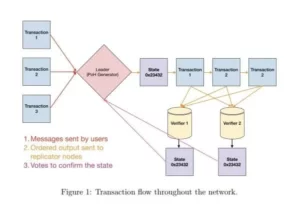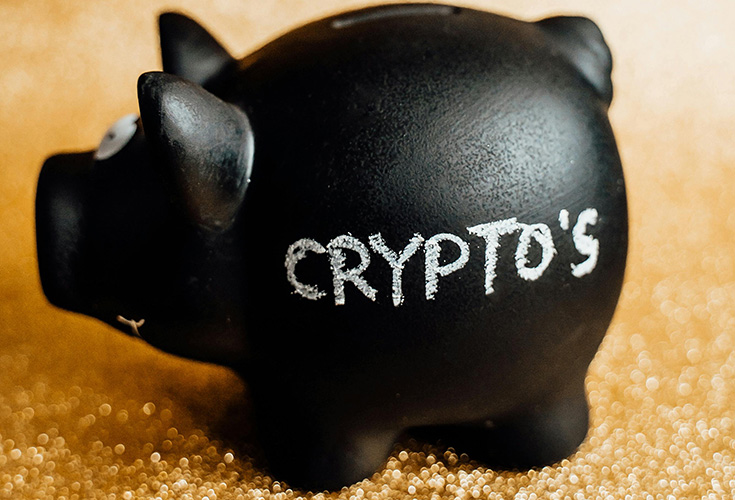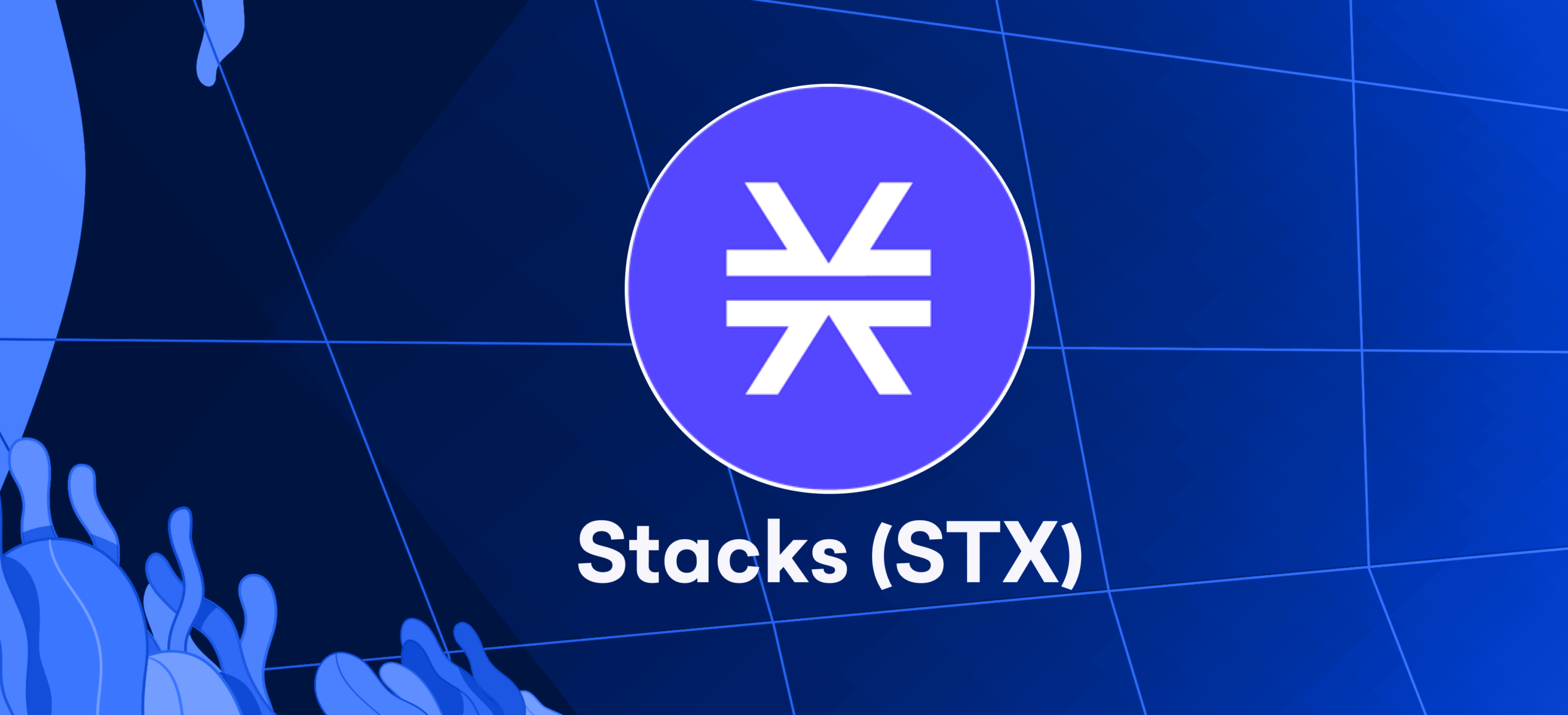
Introduction
Despite its innovativeness, blockchain technology encounters specific obstacles such as high transaction fees, scalability limitations, low processing capacity, and other related issues. In the DeFi arena, numerous initiatives strive to achieve the status of the initial web-scalable blockchain while addressing typical problems to provide users with an optimal experience.
A blockchain called Solana is becoming more and more well-liked in the DeFi community. It is an open-source platform that employs various innovative technologies to improve scalability and provide a dependable infrastructure for developing decentralized apps (dApps). Furthermore, developers desire Solana as it is designed to resist censorship.
What exactly is Solana?
Solana’s distributed protocol enables developers to develop decentralized apps (dApps) with a high throughput of up to 65,000 transactions per second (TPS). This is made possible by its advanced distributed computing system. It offers developers a secure and efficient platform to build and launch their dApps.
Solana has a distinctive cryptographic process known as Proof of History, which sets it apart from other protocols that normally use either Proof of Stake, PoS, Proof of Work, or PoW, mechanisms. (PoH). This novel method improves scalability without harming network security.
Solana is one of the layer-one solutions that can handle many transactions per second without requiring second layers or off-chains, which sets it apart from most other options.
The essential technologies behind Solana
Proof of History” with its distinctive features
Solana utilizes PoH as its consensus mechanism, a series of computations that generate a digital record verifying an event on the network at a specific time. It functions as a cryptographic clock, providing a timestamp for each transaction in the network and an associated data structure, which could be as simple as appending data.

Proof of Stake forms the foundation of PoH, and it employs the Tower BFT algorithm to reach a consensus and provide an additional means of confirming transactions. PoH operates as a Verifiable Delay Function (VDF) with a high frequency.
A VDF consists of three functions – Setup, Evaluation, and Verification – that generate different and reliable output. It aims to ensure the network remains orderly by providing evidence that blocks producers have waited long enough for it to progress.
Solana utilizes SHA256, a patented cryptographic function that produces a 256-bit output, similar to Bitcoin. The network regularly captures the count and hashes of the SHA256 algorithm, which generates real-time data based on the included hashes running on CPUs.
Validators can use a sequence of hashes to record a specific piece of data they created before generating a particular hash index. When the system inserts this data, it generates a timestamp for transactions.
Solana asserts that it can attain a throughput of 65,000 transactions per second, with a block time averaging 400 milliseconds and an average transaction fee of 0.000005 SOL, Solana’s native cryptocurrency. This is made feasible by having all validators on the network equipped with a cryptographic clock to monitor events instead of depending on other nodes to validate transactions.
Tower BFT
Tower BFT is a protocol derived from the Practical Byzantine Fault Tolerance (PBFT) that enhances network security and performance. It serves as Solana’s consensus mechanism, utilizing the PoH cryptographic clock to achieve high efficiency and reliability in transaction processing.
Tower BFT aims to tackle issues such as expensive rollbacks, discrepancies in ASIC processing speeds among nodes, and the potential hazards of reward-based voting mechanisms.
Turbine
The Turbine protocol segments data into smaller packets and distributes them with minimal bandwidth to enhance network performance. This enables nodes to operate more efficiently while consuming less power, making it an effective block propagation solution. Turbine aims to optimize data transfer and improve the system’s overall functioning by leveraging the network.
Clusters
Solana defines clusters as validator groups with varying objectives but collaborating to process client transactions. Clusters can coexist; they strive to merge if they share a genesis block. Multiple clusters can work harmoniously towards a common goal, creating a more efficient and effective network.
Gulf Stream
Solana’s protocol for forwarding, known as the Gulf Stream, operates without a mempool. In cryptocurrency, a node holds unconfirmed transactions in its mempool until it eventually adds them to the blockchain.
Pipelining
Pipelining is a popular technique in CPU design that involves dividing the processing of multiple transactions into different stages, allowing each CPU to complete its task efficiently.
The Origins and Establishment of Solana: A Historical Overview
In 2017, Anatoly Yakovenko, a former engineer at Qualcomm, established Solana. That same year, he released the Solana Whitepaper, proposing a distributed system using a novel algorithm to enhance the commonly used Proof of Stake and Proof of Work blockchains. Building a more effective and scalable platform for decentralized applications was the goal.
They developed Proof of History (PoH) to encode time passage within a data structure, creating a timekeeping method. This is the origin story of PoH.
The Initial Coin Offering (ICO) of Solana
Yakovenko, along with his fellow employees Greg Fitzgerald and Eric Williams, founded Solana, and they established Solana Labs, based in San Francisco, California, a year later.
The project appeared in March 2020 and raised over $25.6 million in an Initial Coin Offering. (ICO). However, Solana Labs also raised $314 million in June 2021 for network expansion.
It has subsequently become one of the fastest-growing protocols in the DeFi arena. The protocol attracted market interest in 2021 because of its technology and the fantastic success of its native SOL token, whose value increased.
The Group Responsible for Solana’s Development
In addition to Yakovenko, Fitzgerald, and Williams, who were the founders, notable developers and management personnel have been successfully recruited by the project.
The team behind the Solana Foundation, a non-profit organization headquartered in Switzerland, promotes and works with international partners to support Solana. Solana Labs, on the other hand, takes care of the protocol’s development.
Supporters and Network of Solana
Solana’s launch drew interest from major players in the blockchain and DeFi industry and institutional investors such as Multicoin Capital, CMCC, Tether, Chainlink, and Serum.
Solana’s ecosystem encompasses more than 231 companies from various industries. Notable examples include Automated Market Makers (AMMs) such as Serum, oracle solutions provided by ChainLink, Gravity, Switchboard, Band Protocol, Nozomi, stablecoin projects, wallets, and exchanges.
Introducing the SOL Token: A Distinctive Digital Asset
SOL is Solana’s inherent and functional token for staking and covering transaction fees. The creators intend to decrease its supply by an annual inflation rate of 1.5%, despite being an inflationary token.
Since the beta testnet release in March 2020, SOL has endeavored to establish itself as one of the foremost cryptocurrencies.
As previously noted, SOL has demonstrated outstanding performance in 2021 and attained the rank of the 7th largest cryptocurrency in total market capitalization (as of September 2021).
The ICO occurred almost 18 months ago, and the SOL token’s value has risen to 725 times its initial price of $0.22.
Rivals of Solana
Solana has made significant efforts in the DeFi industry to establish itself as a worthy contender to other major players, including Ethereum, Polkadot, and Binance’s BSC.
Solana purportedly processes over 60,000 TPS. Experts consider it one of the quickest blockchains that can compete with other industries beyond the DeFi sphere. A maximum of 16 transactions per second is the processing capacity of Ethereum, as an example.
Here is the advantage of Solana:
1- To expedite transaction confirmation, an alternative consensus algorithm is employed.
2- A revised tokenomics aimed at reducing fees.
3- A more satisfactory experience for users in general.
ETH 2.0 and Solana’s Hybrid Mechanism
Ethereum has garnered significant attention from the DeFi community due to the ongoing development of Ethereum 2.0. This upgrade is highly anticipated among DeFi enthusiasts. It has the potential to enhance scalability, decrease fees, and bolster throughput greatly.
Solana’s hybrid mechanism includes Proof of History (PoH). It has been a significant draw for developers due to its ability to address common blockchain challenges. This mechanism shortens the time between transactions and enhances network security.
Solana’s unique non-linear design and its hybrid technology set it apart from other blockchains and significantly impact the DeFi landscape.
NFTs Gain Momentum on the Solana Blockchain
In 2021, Solana experienced a surge in popularity mainly due to a significant increase in its price. As of October 2021, the cryptocurrency has witnessed an approximately 8000% increase in year-to-date gains.
The rapid expansion of non-fungible tokens (NFTs) on the Solana blockchain has contributed much to the growth. The main reason for Solana’s popularity over Ethereum was its affordability and speed. Creating NFTs on Solana was not only inexpensive but also significantly faster. Solana’s thriving NFT ecosystem benefitted from the successful launch of numerous projects.
One project, the Degenerate Ape Academy, had NFTs that fetched prices exceeding $1 million. Moonrock Capital, a cryptocurrency venture capital fund, purchased the 13th rarest ape for 5980 SOL.
Difficulties and Drawbacks Associated with Solana
Solana is a blockchain project that can compete with major players in the industry. However, it still has certain challenges that need to be addressed. One of these challenges is the potential for centralization due to the limited number of blockchain validators.
Solana has faced criticism for its open validation system that allows anyone on the network to become a validator.
The protocol continues to identify itself as a beta mainnet because it may contain certain bugs, codes, and delays. Despite the potential issues, developers and projects such as Solstarter, Serum Swaw, and Raydium are still joining the network to build and participate in it. Nevertheless, this shows the continued growth and interest in the network.
The network validators needed to upgrade their version before resolving the issue. This caused the network to experience two significant disruptions in September, with the second lasting for several hours.








